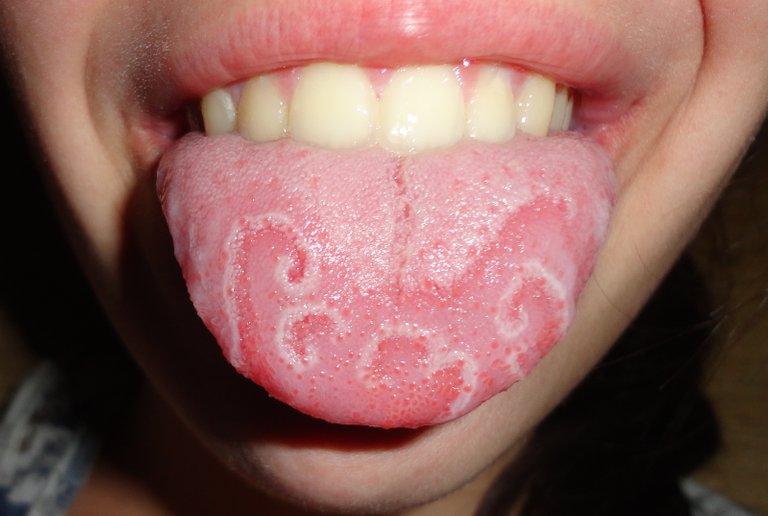The Tongue and Myths that aren't True
While growing up, I would hear people say that the tongue is the strongest muscle in the body, and trust me, we all believed this myth, because it was always backed up with biblical words giving credit to the power of the tongue. Anyways, I am not going to the biblical talk now, but I am sure you must have been told several myth about the tongue as well, but today, I was to explain a few thing about the tongue.
The tongue is a muscular tissue found at the base, inside the mouth. The tongue is responsible for a lot of things including taste, speech, assisting in moving food and shaping food, and in the cleansing of the mouth. The tongue which is made up of muscle tissues and covered with mucus membrane, is a digestive organ which extends to the esophagus. The tongue has three main part, which are the root of the tongue, the tip of the tongue and the body of the tongue. The tongue muscles are divided into two, the intrinsic tongue muscles and the extrinsic tongue muscle. The extrinsic tongue muscles exist at the outer part of the tongue which helps the tongue to move in different direction. There are four extrinsic tongue muscle with one at each side of the tongue. One of the muscles is attached to the chin bone known as genioglossus which helps for extending and retracting the tongue. Another extrinsic muscle is the hyoglossus which is connected to the hyoid bone, for retraction of the tongue. Another extrinsic muscle of the tongue is the palatoglussus muscle, and finally the styloglossus muscle. The intrinsic muscles of the tongue is responsible for determining the change in size and shape of the tongue. There are four intrinsic tongue muscles based on the orientation of the tongue, they are the superior longitudinal muscle, Inferior Longitudinal Muscle, Transverse Muscle, and Vertical Muscle.The Dorsum is made up of the pharyngeal part, and the oral part, and it is divided by the Sulcus Terminalis. It is important to know that the attachment that the tissue of the tongue has to the bones helps us from swallowing the tongue itself.
Back to the myth that say that the tongue is the strongest muscle in the body, and while the tongue does a lot of activities, it isn't the strongest muscle in the body. The masseter is the strongest muscle in the body. Growing up, I heard that the tongue was responsible for cleaning dirt in foods eaten. Well, the tongue actually possesses a tissue known as the lingual tonsil which protects the throat from pathogens such as bacteria and viruses getting to it.
The dursom of the tongue is covered with papillae, and there are four types of lingual papillae, which includes the filiform papillae, fungiform papillae, vallate papillae, foliate papillae which are covered with taste buds except from the filiform papillae.
Filiform Papillae are located at the top two-third of the tongue. it is the smallest thread-like papillae which is really but the most numerous of all papillae. It doesn't possess any taste buds.
Fungiform papillae is a mushroom shaped papillae which is present all through the dorsal surface of the tongue. There are approximately 1600 taste buds in the fungiform papillae.
Vallate papillae is the largest papillae with about 8 - 12 papillae in the mouth with about 250 taste buds, and it is aligned in a V shape.
Foliate papillae located at the posterior one third of the tongue is a rough fold like tissue. They degenerate from childhood in humans and so are poorly developed.
The Intrinsic and extrinsic muscles of the tongue are innervated by cranial nerve 12 (the hypoglassal nerve). The Palatoglossus muscle of the tongue is innervated by the 10th cranial nerve (Vagus nerve). The Chorda tympani of the cranial nerve 7 (facial nerve) is responsible for innervating the anterior two-third of the tongue for taste, while the trigeminal nerve (Cranial Nerve 3) is responsible for general sensation.
One final myth I will like to discuss before I bring this post to a halt is one that has to do with each side of the tongue being responsible for different types of tastes. As a child, I was told that the tip of the tongue was responsible for tasting salty food, the posterior aspect for tasting bitter, the sides for sour, the middle for sweet and umami. Well, the truth is, the taste receptors are spread equally in the tongue and not giving specificity to any part. The tongue taste receptors are not in a map divided form, it is distributed around the tongue.

Thanks for your contribution to the STEMsocial community. Feel free to join us on discord to get to know the rest of us!
Please consider delegating to the @stemsocial account (85% of the curation rewards are returned).
Thanks for including @stemsocial as a beneficiary, which gives you stronger support.
Yeah i think i also tought in school about this tongue map! Lol
!1UP
You have received a 1UP from @gwajnberg!
@stem-curator, @neoxag-curator
And they will bring !PIZZA 🍕.
Learn more about our delegation service to earn daily rewards. Join the Cartel on Discord.